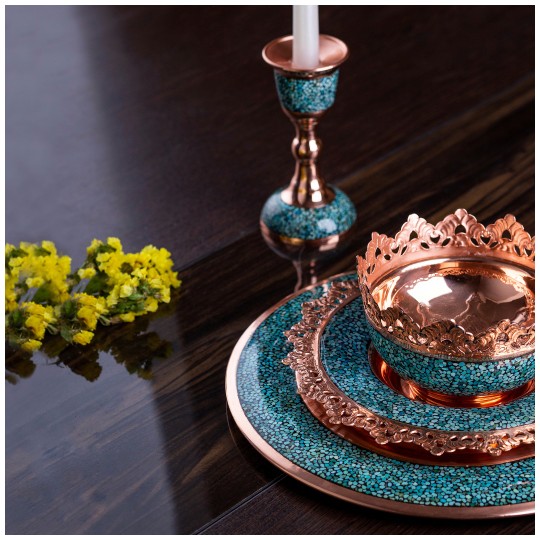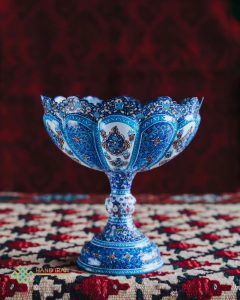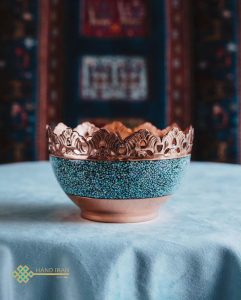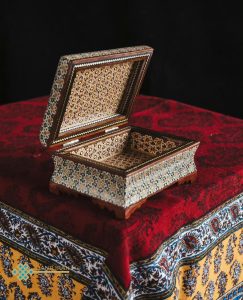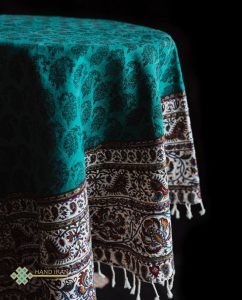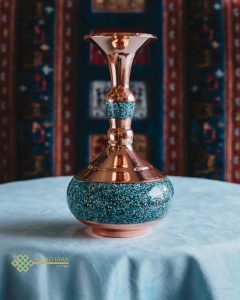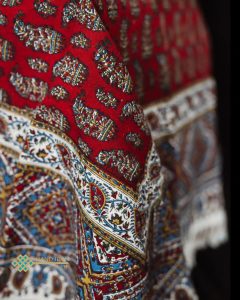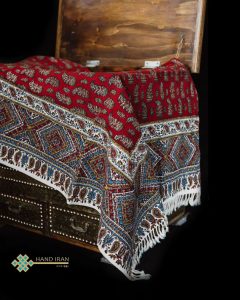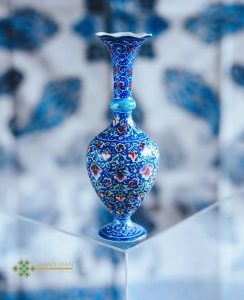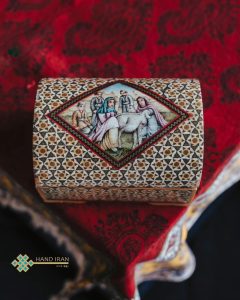Firoozekoubi, also known as turquoise in English, is one of the rare handicraft industries that embodies the beauty and allure of a fine handicraft product. It is said that the history of this industry dates back to about sixty years ago. At that time, a person named Youssef Hekmayan, also known as Mohammad Reza, began the art of firoozekoubi in Mashhad, working on embellishments such as bracelets, brooches, earrings, and more. About twenty years later, this industry was transferred to Isfahan by another artisan named Haj Dadash.
In Isfahan, besides jewelry, firoozekoubi is also used in utensils such as plates, cups, sprinklers, etc. Several workers are engaged in this craft in Haj Dadash’s workshop, including some female workers who participate in tasks such as arranging the turquoise on the work.
One of the ancillary tasks of the firoozekoubi industry is the preparation of the infrastructure, which is carried out separately in the goldsmith workshop. Two goldsmiths who were responsible for preparing the infrastructure gradually became involved in firoozekoubi and are currently engaged in this craft.
Currently, the art of firoozekoubi is prevalent only in Isfahan, and the artisans working in this field are limited in number and exclusive.
The process of making and producing firoozekoubi involves two main stages:
A) Goldsmithing: Goldsmithing refers to the construction and preparation of the desired object using one of the metals mentioned, such as copper, silver, brass. This work is performed by goldsmiths or metal craftsmen using their hands, press, or a combination of both.
After creating the overall shape of the object, whether it is a container or jewelry, the specific part to be adorned with turquoise is identified. A thin metal wire (made of the same metal as the object) called “Kandan” is placed around it, and it is soldered so that the section surrounding the desired form has a wall height of two to three millimeters above the surface of the object. This is usually done by a goldsmith or sometimes by the firoozekoubi artisan themselves.
If the prepared part for firoozekoubi occupies a large surface and appears empty, smaller decorative patterns (such as flowers and bushes) are placed inside it using wire of the same metal, and they are soldered again. This process not only enhances the beauty of the work’s form but also provides greater strength to the firoozekoubi surface.
B) Firoozekoubi: First and foremost, the firoozekoubi artisan purchases unusable turquoise stones from firoozekoubi workshops or mines in Mashhad, Neyshabur, and Damghan.
Since these stones are accompanied by some soil and ordinary debris, they are first separated and cleaned from other waste. Then, the turquoise stones are sorted according to their size and categorized by grain size, so that a more suitable piece of turquoise can be used in the construction of each firoozekoubi product, according to the surface of the work.
In the next stage, the desired object is heated (around 30 degrees Celsius), and while heating, a substance called “walnut lacquer” is sprayed onto the parts that will be decorated with turquoise, covering the surface of the corresponding section with the melted lacquer powder.
While the lacquer is still soft, sticky, and has adhesion, some prepared turquoise stones are placed on the work. The stones must be positioned next to each other in a way that leaves no gaps, if possible.

